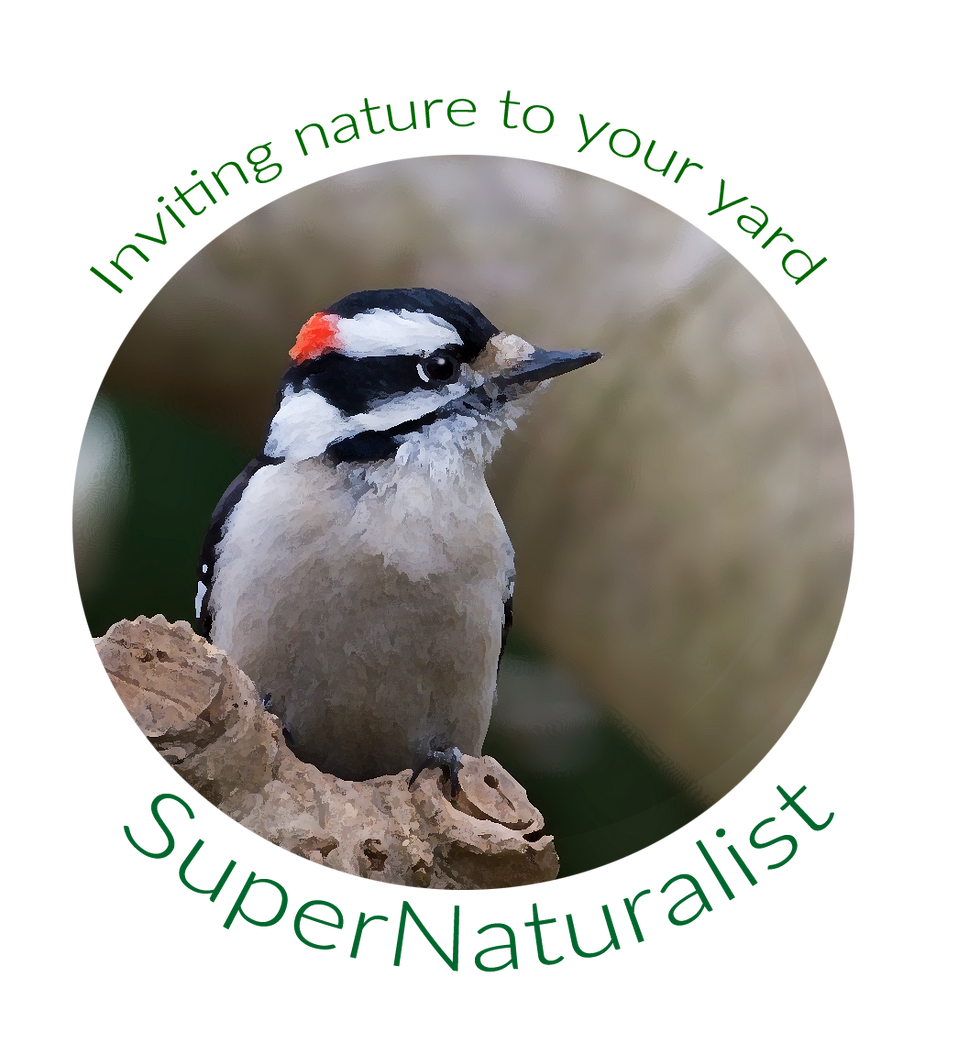As natural habitats give way to development, homeowners can offer wildlife refuge on their property by eliminating sterile lawns with productive landscaping and replacing alien and invasive ornamental plants with native trees, shrubs, and wildflowers. These small landscaping adjustments will immediately impact how much wildlife your property supports.
Over the past ten years, storms have taken several trees off our property. So, in 2020, we began filling these vacated areas with native understory trees and shrubs.
New additions:
Two pawpaw trees (larval host plant of the zebra swallowtail),
Spicebush (larval host plant of the spicebush butterfly)
Crabapple tree provides fall /winter bird feeding and an early-season nectar banquet for stressed pollinators.
Left to right: Pawpaw tree, Spicebush, and crab apple tree (stock photos)
A pawpaw is an understory tree that grows about 15 feet. Pawpaw trees attract zebra swallowtails, who use the tree as their larval host plant.
The pawpaw tree features North America's largest edible fruit. We are planning to split the yield with the squirrels!
Photo by Meagan McCarthy
Early spring can be a food desert for pollinators. However, the early blooming crabapple tree will fill the gap until summer arrives.
Left: a native bee enjoys Anise Hyssop during the abundance of summer.
Our new spicebush provides beautiful fall color, berries for winter bird feeding, and a breeding site for the spicebush swallowtail (left)
2021
My ambitious 2021 plan is in progress. I am replacing 254 square feet of lawn with a pollinator garden.
There is more life on the moon than in this barren patch of grass. Next season, this spot will be teeming with pollinators while providing pictures for this website.

My 2021 plan includes adding the beautiful dutchman's pipe along a split rail fence. Dutchman's pipe or pipevine is the larval host plant for the pipeline swallowtail. I will also replace my invasive butterfly bushes with ironweed, a stunning native shrub featuring fuzzy purple blooms that attract insect pollinators for breeding and nectar-feeding. Passionflower is a native vine that is a valuable butterfly host plant and breeding site for many native insects. In addition, its leaves and flowers are used in herbal teas to promote sleep and relaxation.
Stock Photos
Dutchman's Pipe Ironweed in bloom Passionflower vine
Ironweed is a native, deciduous shrub growing 5 to 8 feet tall. A pollinator favorite and an excellent alternative to the invasive butterfly bush. in 2021, I will replace my butterfly bushes with ironweed
Left: a silver-spotted skipper feeds on ironweed.
Ironweed is also a larval host plant for the Painted Lady butterfly.
In 2021, this clearwing hummingbird moth will feed on native ironweed vs. the invasive butterfly bush shown here.
The cardinal flower and trumpet vine in my new pollinator garden also attract hummingbirds, a critical pollinator for plants with tubular flowers.
This red-purple butterfly visits my yard to enjoy nectar from garlic chive and anise hyssop.

Pipevine Swallowtail
Your 2021 Plan?
Our objective at Supernaturalist.net is to provide homeowners with new perspectives on how to enjoy their property. A backyard humming with woodpeckers, blue jays, cardinals, butterflies, dragonflies, rabbits, and foxes is more attractive than the static experience of a manicured lawn with alien ornamental plants. Both approaches require work, but cooperation with nature's forces is more rewarding and less stressful than trying to control them!
Any habitat-friendly improvement for your property in 2021 will attract birds, bees, and butterflies to your yard.
Below is a starter kit for next season's planning
Add native and pollinator-friendly plants to your property,
Replace lawn with productive pollinator gardens or native shrubs
Provide food, water, and shelter for local wildlife
Eliminate chemical herbicides, pesticides, and herbicides
Planting native oak, sugar maple, or cherry trees to support birds and butterflies
Mow your lawn 3 x per month to allow clover to bloom for pollinators
It is incredible how fast local wildlife will respond to the slightest improvement on your property. If you build it, nature will find your yard and stay there!
For more information, see our native plant photo gallery.

All photographs, unless otherwise noted, were taken on our one-acre property in eastern PA.
Photographs by SuperNaturalist.net




























Comments